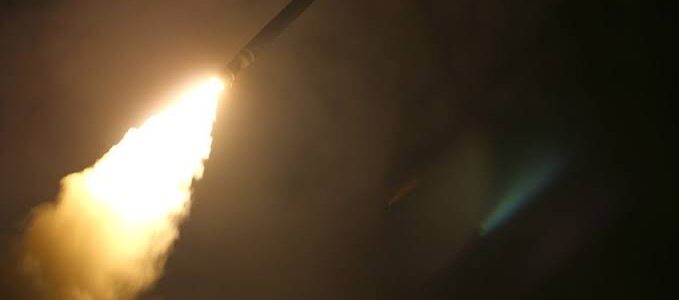
Six U.S. service members so far have been diagnosed with traumatic brain injuries from attacks by Iran-backed militants in Syria earlier this month that killed an American contractor, the Pentagon said Thursday.
The diagnoses were made as part of ongoing medical assessments of American personnel at the two locations in northeast Syria targeted by an Iran-made drone and militant rockets, and more TBI cases are possible, said Brig. Gen Pat Ryder, the Pentagon spokesman.

Defense Secretary Lloyd Austin ordered retaliatory airstrikes that killed eight militants, according to the latest Pentagon assessment.
The attacks are part of escalation skirmishes with Iran as its Islamic Revolutionary Guard Corps, or IRGC, has backed strikes by militant groups on the roughly 900 U.S. troops, and an unknown number of contractors, who remain in Syria to counter the Islamic State terrorist group.

“Again, we do not seek conflict with Iran, but we will always protect our people,” Ryder said during a briefing Thursday to reporters.
It is unclear how many U.S. personnel may have been exposed to blasts and are at risk of brain injuries from the attacks.
“These additional injuries were identified during post-attack medical screening,” Ryder said. “Those will be ongoing as a matter of standard procedure. So, there is always the possibility that there could be additional, but that’s where we’re at.”
An Iran-made drone struck a base housing U.S. personnel in Hasakah, Syria, on March 23, killing the contractor and wounding six, including troops. By Thursday, all the victims had either been treated and released or were in stable condition and still receiving medical care.
The base’s air defense system was not fully functional and did not stop the drone despite the forces being on high alert following 78 Iran-backed attacks in the region over the past two years, The New York Times first reported last week. The Pentagon declined to comment on reports the defense system failed.
“One service member was medically evacuated to Landstuhl [Regional Medical Center in Germany] to receive treatment, and two U.S. service members and [a] U.S. contractor are receiving medical treatment in Iraq,” Ryder said.
A service member injured in a follow-up Iran-backed rocket attack March 24 on the Green Village outpost in Syria was in stable condition and receiving medical care in Iraq.
Following the March 23 attack, Air Force F-15E Strike Eagle fighter jets immediately struck IRGC sites in the area. “This was another in a series of attacks on our troops and partner forces,” Gen. Erik Kurilla, head of U.S. Central Command, said in a statement at the time.
The retaliatory attack was followed up by more militant rocket attacks on facilities housing Americans, raising concerns over an escalation with Iran, which seeks influence in Syria and neighboring Iraq to counter the U.S.
President Joe Biden said the U.S. would “act forcefully” to protect Americans overseas but emphasized that it does not seek conflict with Iran, when asked about the strikes during a visit to Canada last week.
In January 2020, Iran struck Al Asad Air Base in Iraq with 15 ballistic missiles, and the U.S. initially denied any injuries had occurred. Former President Donald Trump, who first announced that there had been no injuries, then said some service members had reported “headaches.”
Eventually, the Pentagon said 109 service members had been diagnosed with TBI. The incident resulted in a long struggle for some troops, including National Guard members, to get recognition for their injuries. Some took more than two years to finally receive their Purple Hearts.
Credit: Yahoo News
